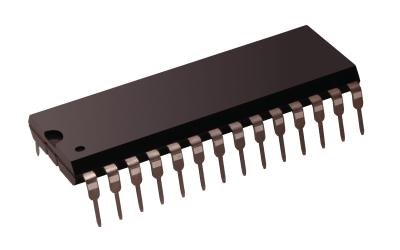Computer memory refers to the physical devices used to store data or programs (sequences of instructions) on a temporary or permanent basis for use in an electronic digital computer also internal storage areas in the computer. Computers represent information in binary code, written as sequences of 0 and 1. Each binary digit (or ''bit'') may be stored by any physical system that can be in either of two stable states, to represent 0 and 1. Such a system is called bistable. The term memory identifies data storage that comes in the form of chips. 8bit=1byte
- RAM (Random Access Memory)
- ROM (Read only Memory)
- RAM (Random Access Memory):-
Random access memory is used to store data temporarily. This is the same as main memory. When used by itself, the term RAM refers to read and write memory; that is, you can both write data into RAM and read data from RAM. This is contrast to ROM, which permits you only to read data. Most Ram is volatile, which means that is requires a steady flow of electricity to maintain its contents. As soon as that power is turned off, whatever the data was in RAM is lost. It read write data randomly so it is called random access memory.
- SRAM (Static Random Access Memory)
- DRAM (Dynamic Random Assess Memory)
- SRAM (Static Random Access Memory):-
Short for static random access memory and pronounces ess-ram. SRAM is a type of memory that is faster and more reliable then the more common DRAM (dynamic RAM). The term static is derived from the fact that it doesn't need to be refreshed like dynamic RAM.
- DRAM (Dynamic Random Access Memory):-
Pronounced Dee-ram, DRAM stands for dynamic random access memory, a type of memory used in most computers. Unlike to sram it need to be refreshed other wise data is lost after some time.
ROM is a computer memory on which data has been prerecorded. Once data has been written onto the ROM chip, it cannot be removed and can only be read.Unlike main memory (RAM), ROM retains its contents even when the computer is turned off. ROM is referred to as being nonvolatile, whereas RAM is volatile.
- PROM (Programmable Read Only Memory)
- EPROM (Erasable Programmable Read Only Memory)
- EEPROM (Electrically Erasable Programmable Read Only Memory)
- PROM (Programmable Read Only Memory):-
Short for programmable read only memory, a memory chip on which data can be written only once. Once a program has been written onto a PROM, it remains there forever. Unlike RAM, PROMs retain their contents when the computer is turned off.
- EPROM (Erasable Programmable Read only Memory):-
Acronym for erasable programmable read only memory, and pronounced ee-prom, EPROM is a special type of memory that retain its contents until it is exposed to ultraviolet light. The ultraviolet light clears its contents, making it possible tp reprogram the memory. To write to and erase an EPROM, you need a special device called a PROM programmer or PROM burner.
- EEPROM (Electrically Erased Programmable Read Only Memory):-
Pronounced double -ee-prom or e-eprom, short for electrically erasable programmable read only memory. EEPROM is a special type of PROM that can be erased by exposing it to an electrical charge. Like other type of PROM. EEPROM retains its contents even when the power is turned off. Also like other type of ROM, EEPROM is not as fast as RAM.









No comments:
Post a Comment